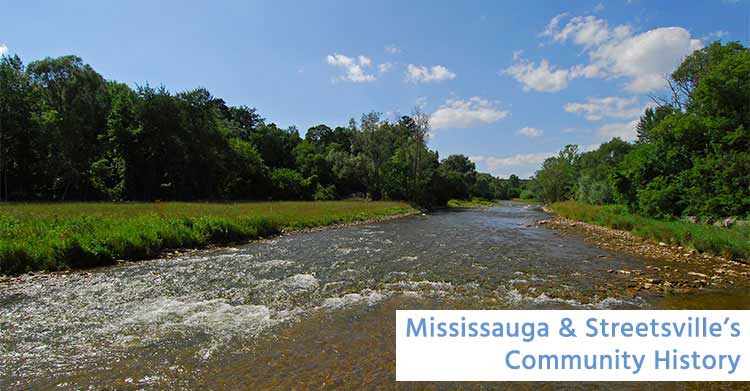Canada’s sixth largest city has a long and varied history. It was originally home to the Mississauga first nations who lived in the Credit River valley and to date, about 2000 sites have been excavated and found full of indigenous artefacts.
Europeans came to the area as early as the 1600s, but settlement didn’t start in earnest until 1805, when the British government entered trade talks with the Mississaugas. The resulting Mississauga Purchase treaty granted 74,000 acres to the British government except for a one-mile strip on either side of the Credit River. (In 2010, the federal government settled a land claim granting the Mississauga band $145M in compensation.)

The dearly first nations people were a major part of early Ontario history. Not only did they support Canadian troops against American invasion in the War of 1812, they were exemplary citizens – Ojibway chief Peter Jones, for example, spoke English as well as his own languages and was an early mentor of Egerton Ryerson, considered the founder of Ontario public education.
Through the early 1800s settlers came to Mississauga, taking up residence along the major water systems – especially at the wide Credit River where it was relatively easy to transport essential goods such as lumber. After surveying the land, the Crown gave out land grants to United Empire Loyalists, and as more people immigrated from America and Europe, settlements were established — Clarkson, Cooksville, Erindale, Malton, Meadowvale, Port Credit and Streetsville – and eventually became villages.
Except for these small villages, most of Mississauga was farmland; although by 1920 cottages were springing up along the lakeshore. Already in 1937, plans for the airport were sealed, with nearly 1500 acres sold to build it.
The post-war housing boom affected Mississauga with the expansion of communities like Lorne Park, which also consumed some of the original hamlets. This was also the start of vast immigration to Canada, and Mississauga became a destination for a number of cultures, especially with the construction of Toronto Pearson, and the many Canadian and multinational corporations that placed headquarters nearby.

Mississauga was fast becoming a multicultural hub and its city centre reflected the progressive, international flavour. Designed by Jones and Kirkland architecture firm, and constructed in 1987, the new city centre was a spare post-modern interpretation of a farmstead — the clock tower a “windmill,” the main building a farmhouse, the cylindrical council chamber a silo, and the structure next to it a barn.
Two notable exceptions to the 1968 amalgamation of several villages into the Town of Mississauga were Port Credit and Streetsville which remained separate until Mississauga incorporated as a city in 1974.

Mississauga’s population has mushroomed with the latest census showing it to be around 750,000. It’s the third largest city on the Great Lakes — behind Chicago and Toronto but ahead of Detroit, Milwaukee and Cleveland Ohio.
Like Toronto with its neighbourhoods, Mississauga has areas of specific characteristics. Spreading over 288 sq kilometers, with a 13-km Lake Ontario shoreline, the city has bustling shopping centres and thriving commercial areas, high rise condo towers and dense low-rise neighbourhoods.
But tucked into various corners are distinct historic villages that escaped the modernizing trend. Streetsville is a perfect example with its intact main street and charming heritage storefronts. On the first weekend of June, the village celebrates this with the annual Bread and Honey Festival which raises money for local charities.

That’s not to say, Streetsville hasn’t grown – from 5000 in January 1962 to 47,000 in 2009. Over half the village holds university or college degrees, 85 percent of residents own their homes and most residents work white collar jobs, with an average household income of $124,255 and only a 5.6% unemployment rate. The average age of a Streetsville resident is 38, with a third of the population between 25 and 44.
The town is known as a Community Node, because of its thriving facilities – local shops and restaurants, community facilities, entertainment, schools, parks and great housing — and the city of Mississauga is focusing on Streetsville’s urban structure to grow in existing and proposed services and the community infrastructure.




